The U.S. Navy revealed concepts for its new national museum by five leading architectural firms who were selected after 80 firms initially showed interest in the project. The firms were tasked with creating a design that would be able to show off some larger Naval artifacts like submarines, boats, and aircrafts. Each team focused on the storied history and timeless traditions of the U.S. Navy to develop a sleek, modern, and state-of-the-art concept. Bjarke Ingels Group (BIG), DLR Group, Perkins & Will are just three of the five finalists.
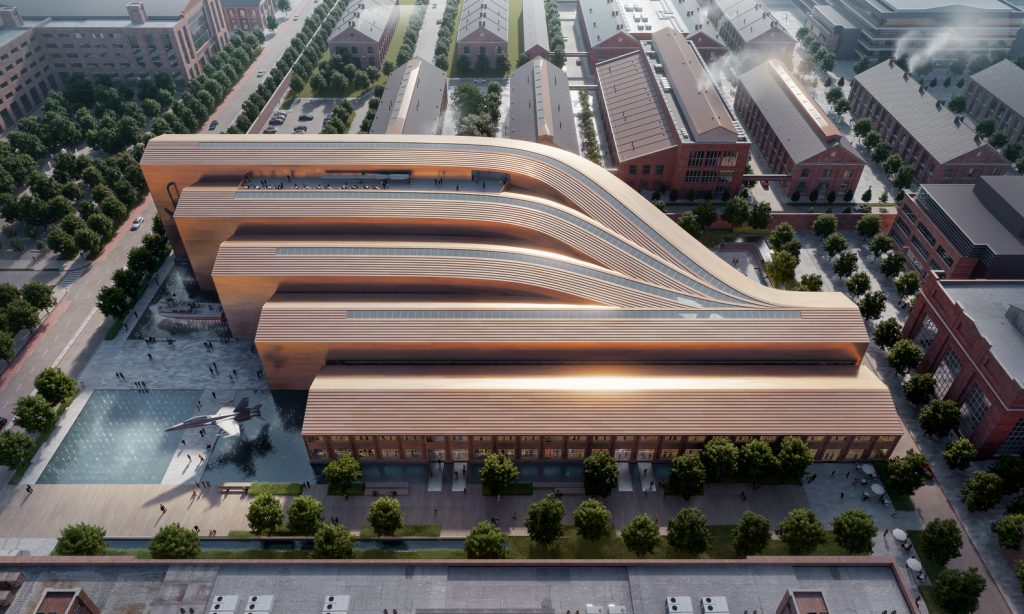
In December 2022, the U.S. Navy announced a nationwide Artistic Ideas Competition for its new National Museum, conducted on behalf of the Navy History and Heritage. The competition was centered on the design of six main building elements distributed across a campus of approximately 270,000 square feet: the general building shape and massing, the main entrance, the Atrium, the marque gallery space, the ceremonial “honor” courtyard, and the incorporation of some of the Navy’s macro artifacts, like a Corsair aircraft, a Swift Boat, and the sail of a submarine.

Bjarke Ingels Group (also header image)
Designed in collaboration with Squint/Opera and Olin Studio, BIG’s copper-colored structure pays homage to the scale, detail, and material of Naval vessels. The open, airy interior terminates in different tunnels with large floor-to-ceiling windows that also show off Naval memorabilia.
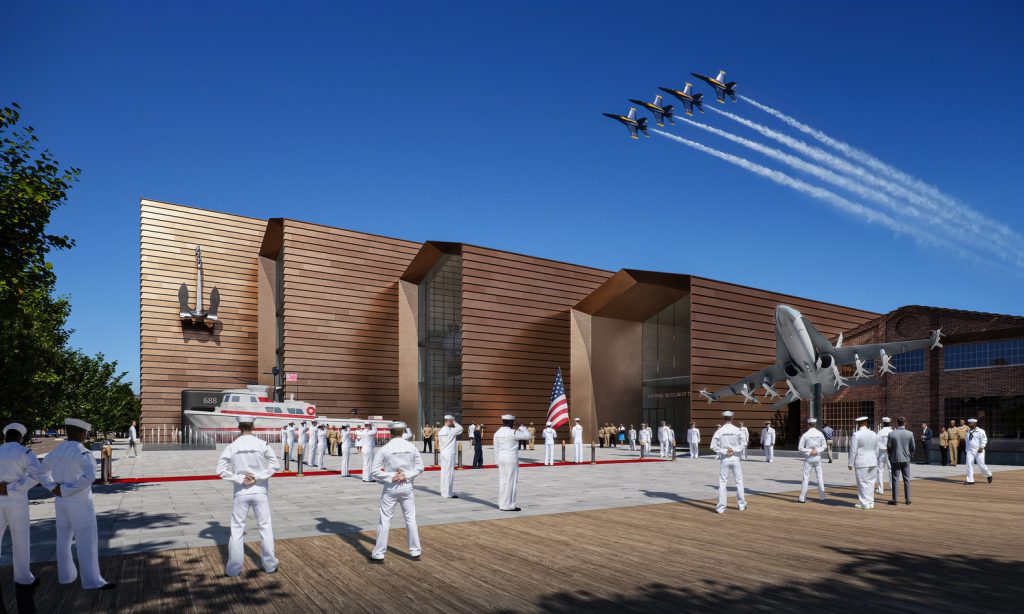
Bjarke Ingels Group
The design features five slender buildings with metallic roofs that will sit on top of the water. The five volumes flow together to form an epic atrium cascading from the roof to the ground where all exhibitions are visually and physically accessible. Large glazings open the museum towards the public street, offering passers-by a glimpse into the museum’s collection of artifacts that relay the mission, lineage, and breadth of operations of the US Navy.
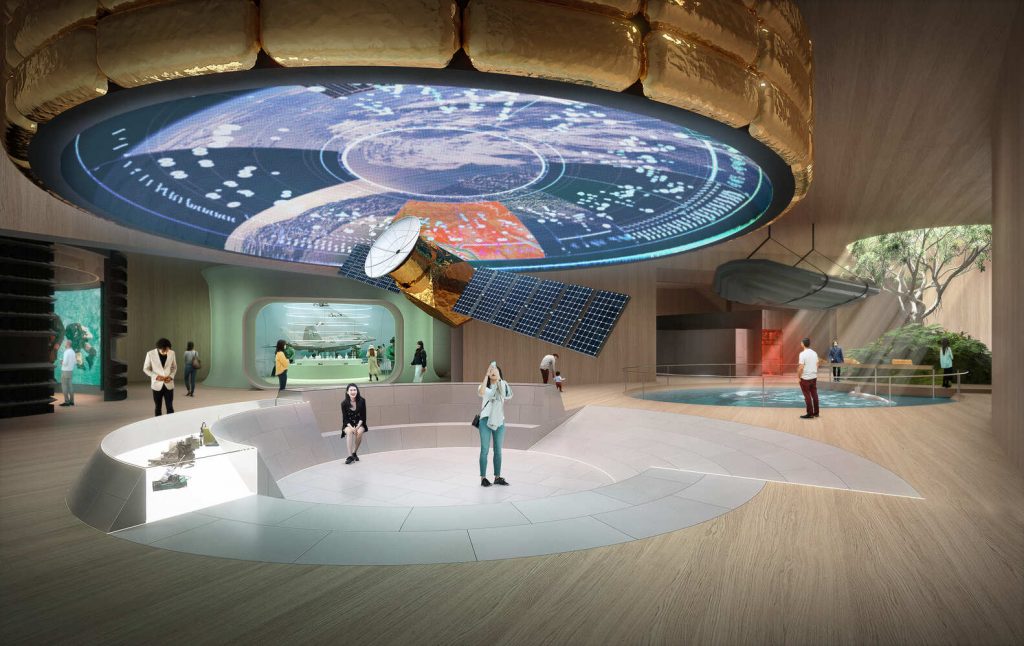
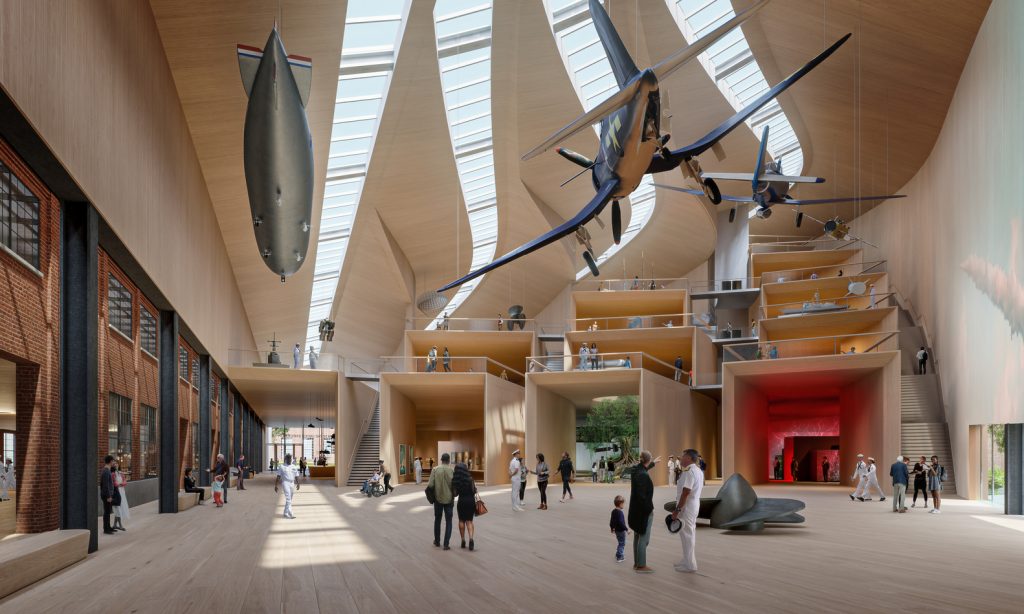
Bjarke Ingels Group
“As a Dane and a resident of a houseboat – a Norwegian ferry I converted into my family home – to imagine a museum for the United States Navy is a true labor of love!” said BIG founder Bjarke Ingels.
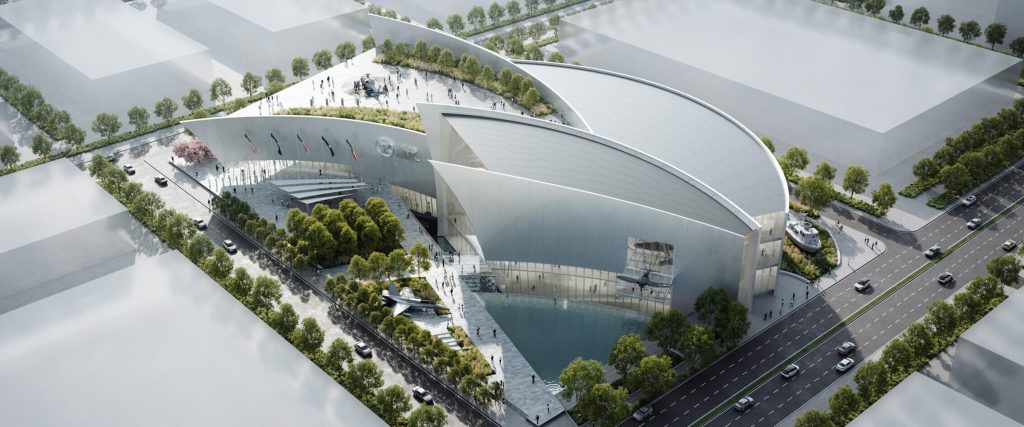
Perkins&Will
Conceived as a tangible expression of the Navy’s honor, courage, and commitment, the concept by Perkins&Will places visitors at the intersection of the three elemental forces — land, sea, and air — that shape the U.S. Navy. The building’s sail-like shapes and landscape conjure a fleet of vessels that skim the ocean’s surface, representing strength and establishing a clear connection to sea, land, and air.
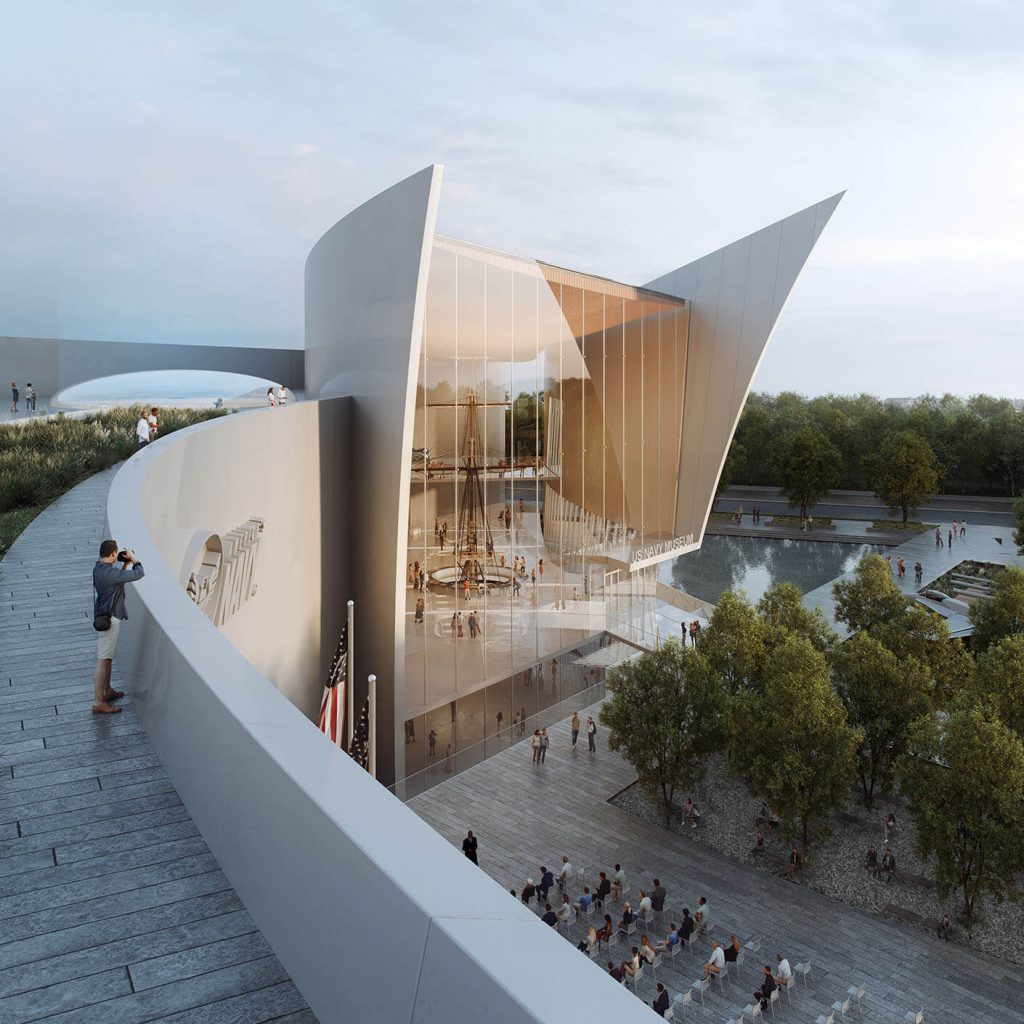
Perkins&Will
The museum’s main entrance pays homage to the commitment of every sailor as they transition from civilian life to naval duty: visitors cross a gangway over water to enter the “vessel,” which is full of treasured stories and experiences.
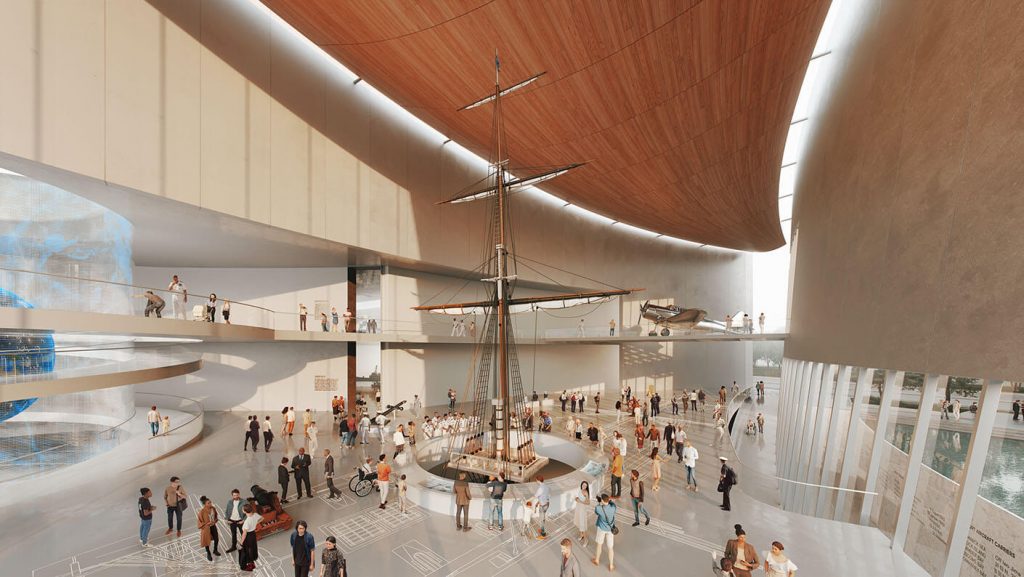
Perkins&Will
The museum’s atrium recalls the engineering ingenuity of the hull of a ship—a nod to the Navy’s integrity. The Subsurface, Surface, Expedition, Aviation, and Space (SSEAS) gallery, a signature attraction, invites visitors on a technological odyssey in which they explore naval acts of courage, fortitude, and conviction. A gently sloping walkway spirals around an interactive digital globe, taking visitors through immersive experiences beginning “below the sea” and ascending “into outer space.” A “Wall of Heroes” honors the personal stories of significant figures in naval history, and “story pods” simulate real-life activities, like commanding a naval ship or going on underwater archaeological expeditions.
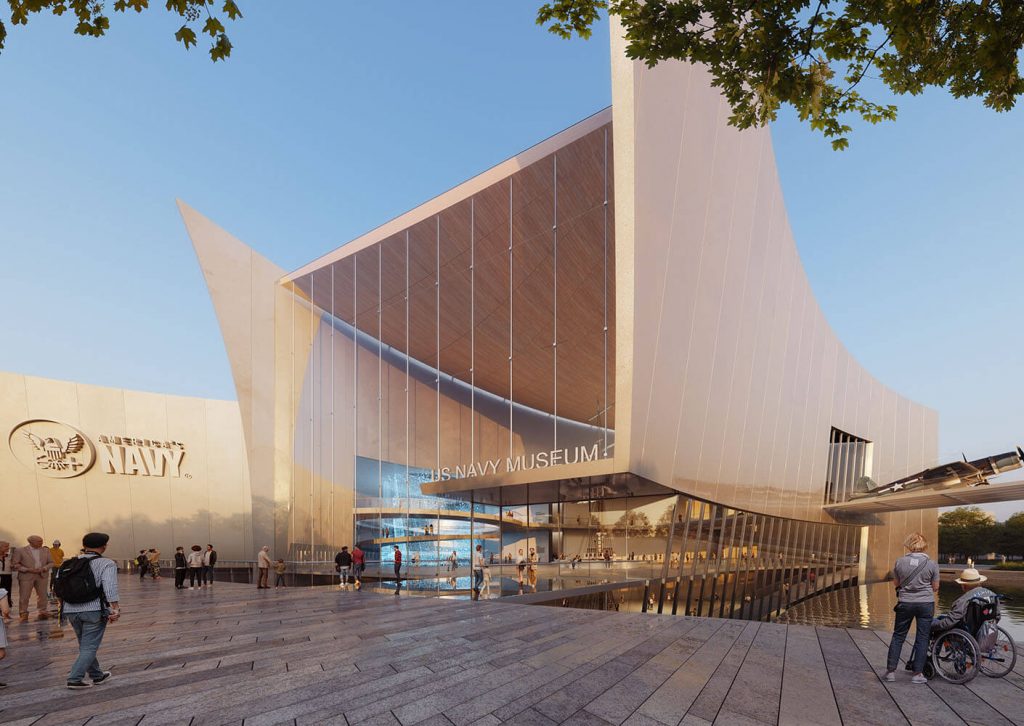
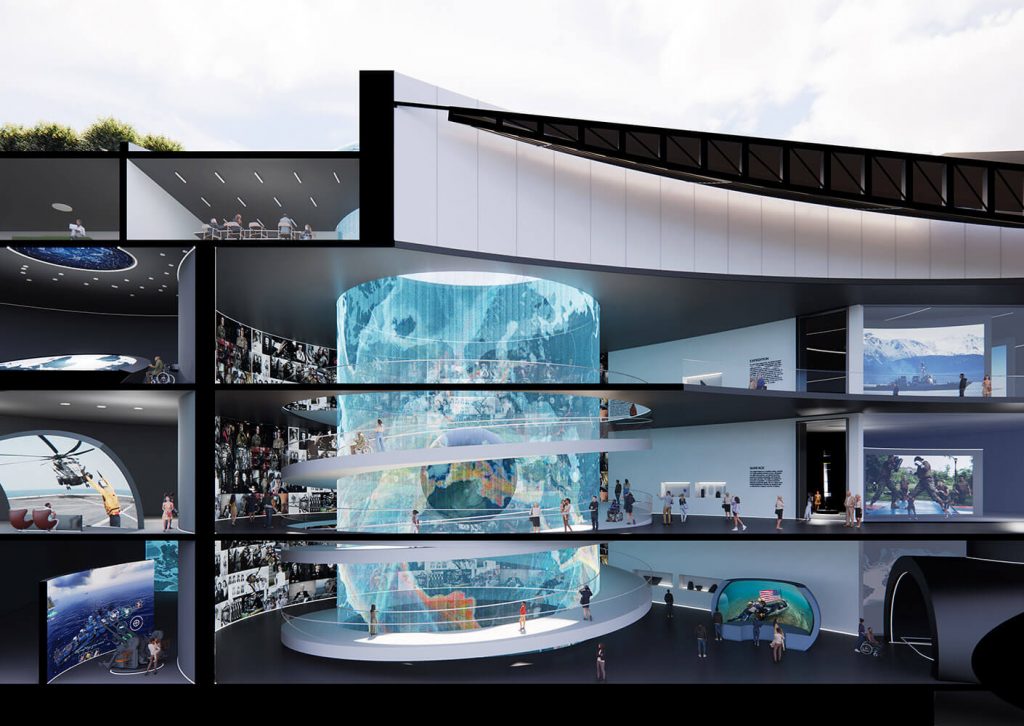
Perkins&Will
Finally, large-scale historical relics are displayed in dramatic context so visitors experience them from multiple perspectives. The Constitution Fighting Top, for example—an observation platform near the top of the mast of the USS Constitution, the oldest commissioned ship in the U.S. Navy—rises through the floor of an atrium space, allowing visitors to engage with it at different heights and angles. Meanwhile, a life-size outline of the USS Constitution’s deck on the museum’s floor allows visitors to imagine what it might have been like to be on an ocean voyage.
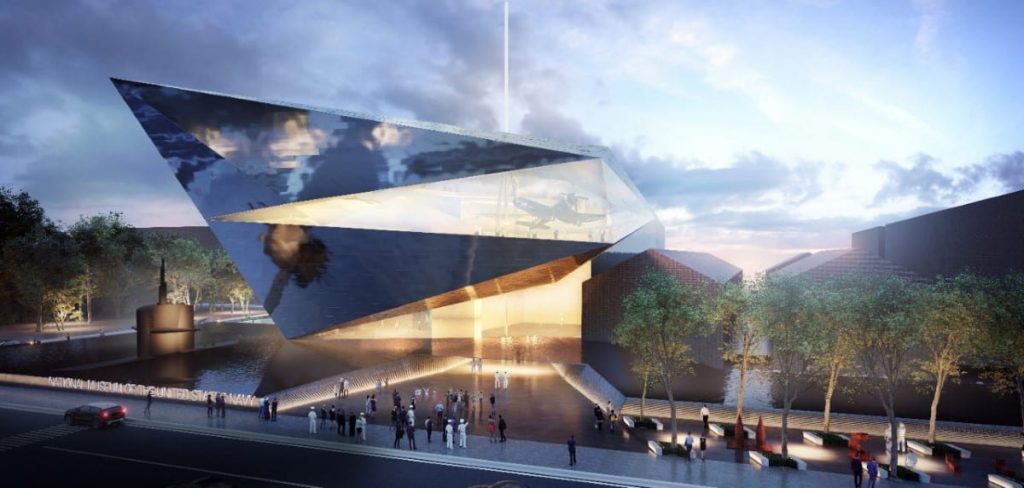
DLR Group
New York design studio DLR Group’s design includes water features at the building’s foundation, entry, and ceremonial courtyard. Facets of the building’s form are envisioned to reflect the ground plane and its terraces on multiple levels with water or sky.
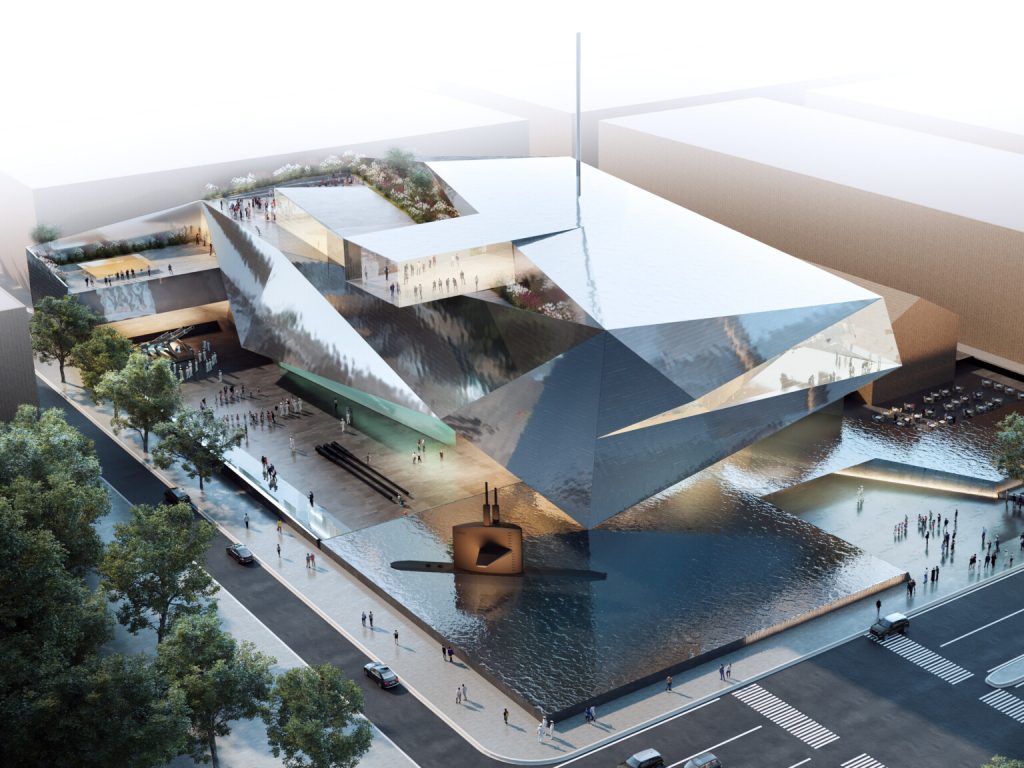
DLR Group
The sculptural building is comprised of three parts—a prominent exhibit volume, an historic structure, and an ancillary wing. A single main entrance is accessed via a ramp within the water feature, from which visitors will enjoy a glimpse of the atrium with suspended airplanes within the building.
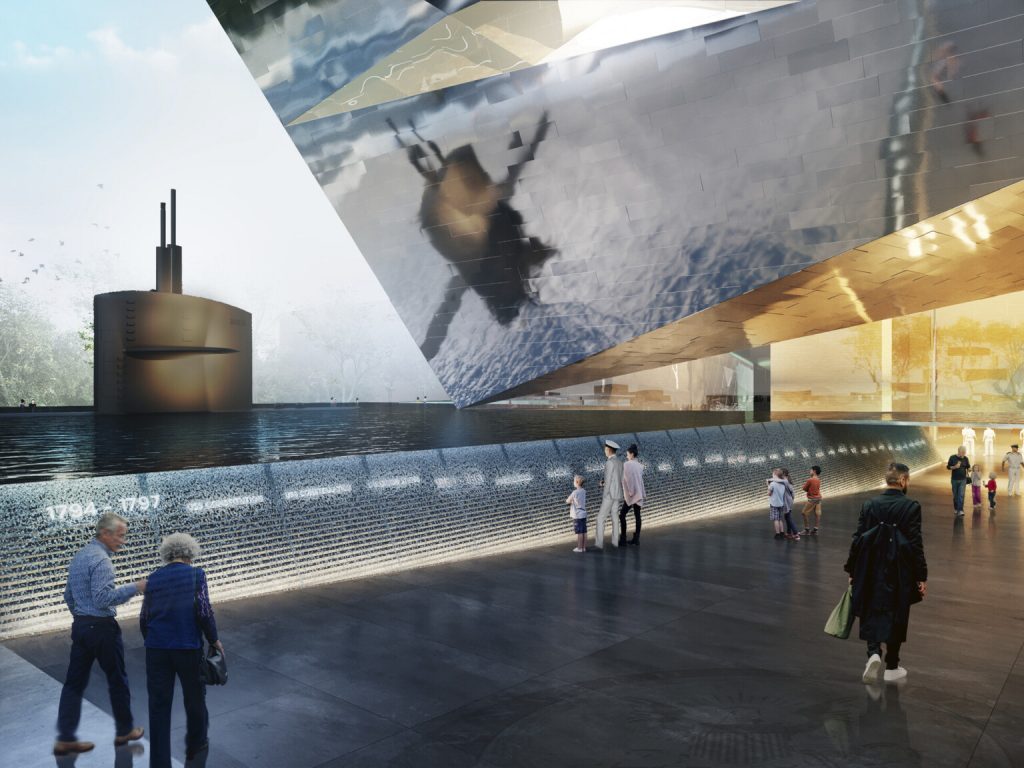
DLR Group
Visitors will ascend via an interpretive platform lift to the highest level of the museum and follow ramped walkways to exhibit galleries. Elevated terraces on multiple levels, the courtyard, and atrium, all enhanced by landscape, seating, and artifacts, provide flexible use for events. Visitors will experience stories, sounds, and important moments of the U.S. Navy’s history through immersive media and integrated technology throughout.